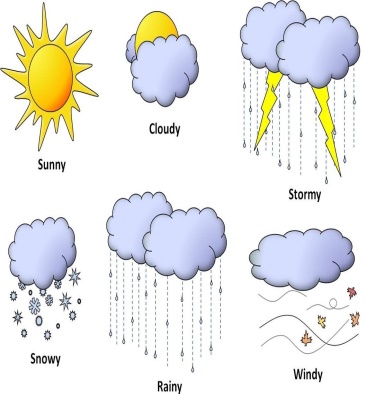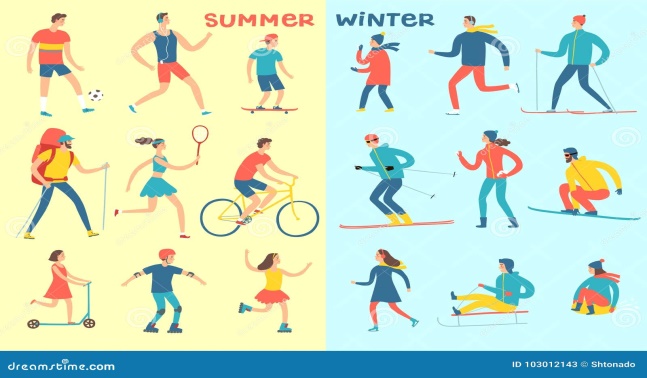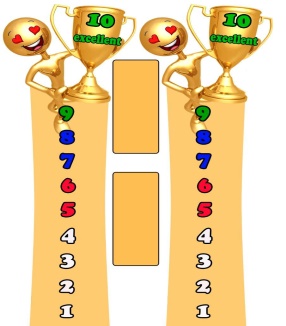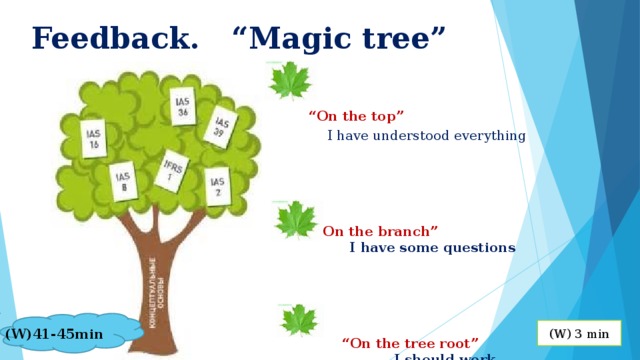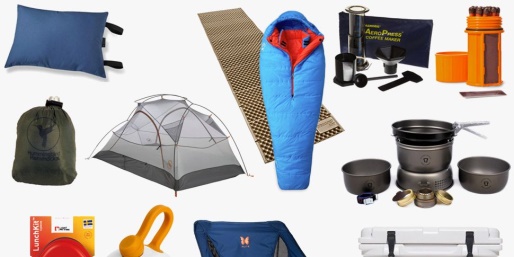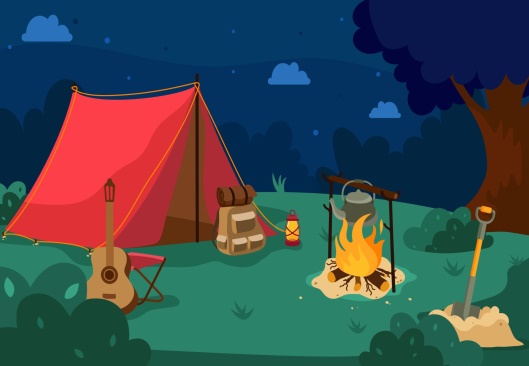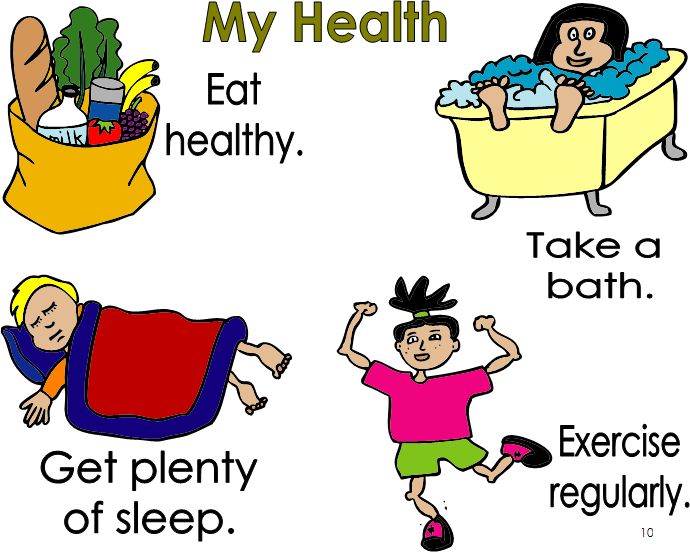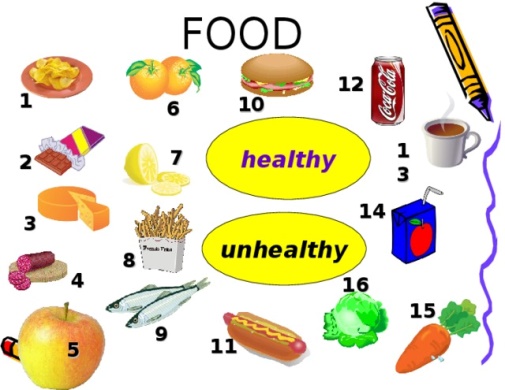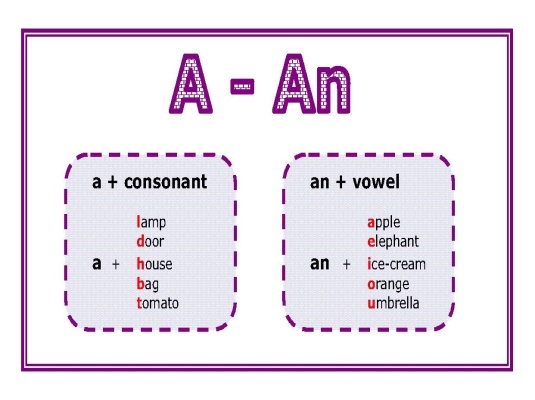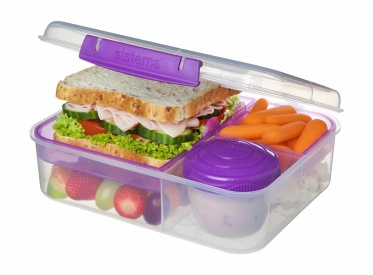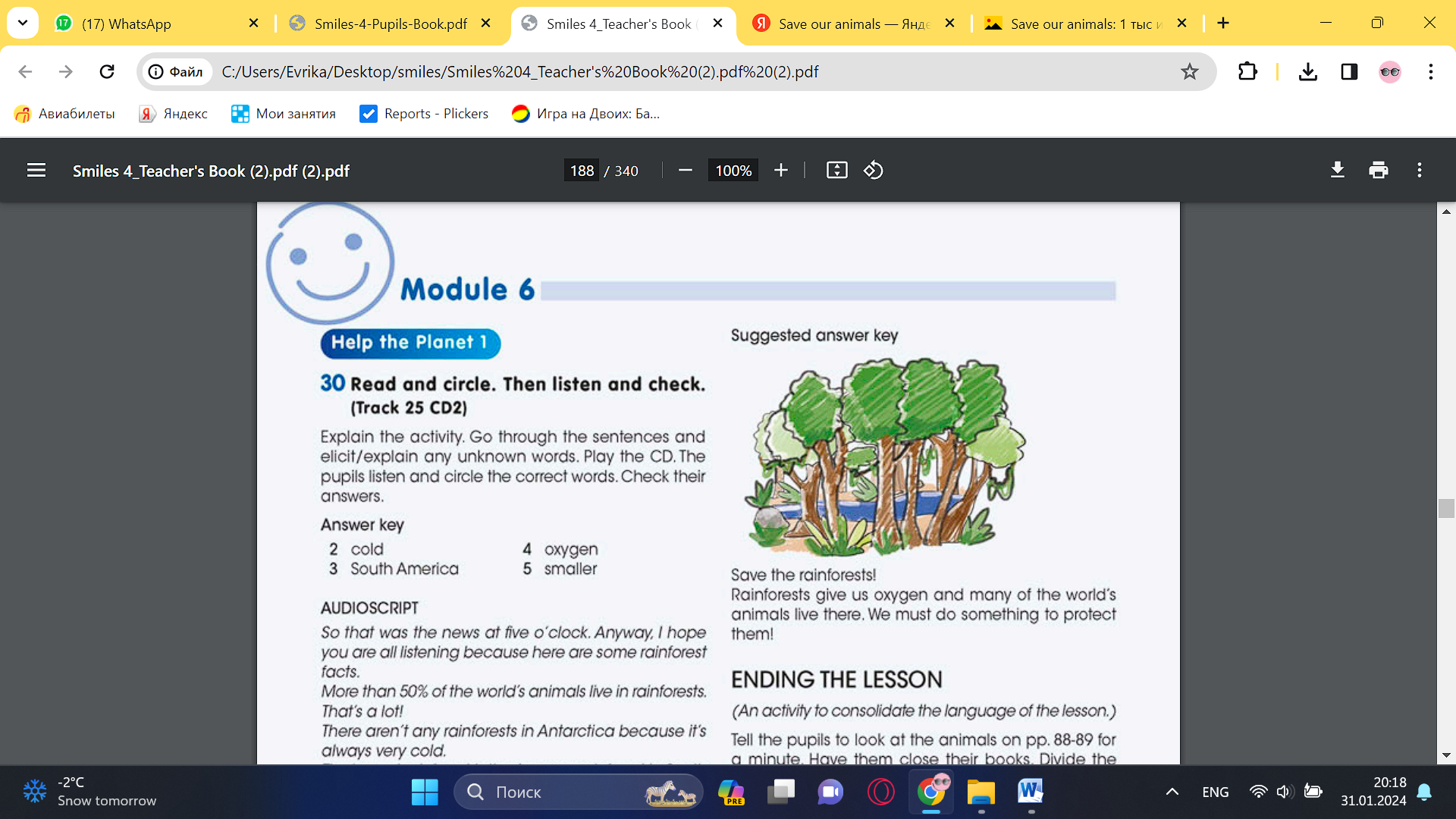Бұл материал сайт қолданушысы жариялаған. Материалдың ішінде жазылған барлық ақпаратқа жауапкершілікті жариялаған қолданушы жауап береді. Ұстаз тілегі тек ақпаратты таратуға қолдау көрсетеді. Егер материал сіздің авторлық құқығыңызды бұзған болса немесе басқа да себептермен сайттан өшіру керек деп ойласаңыз осында жазыңыз

Бонусты жинап картаңызға (kaspi Gold, Halyk bank) шығарып аласыз
4 сынып III токсан КМЖ

Short term plan: term 3
|
Unit: 5 Hot and Cold |
Lesson 33 |
||
|
Teacher name: |
|
||
|
Date: |
|
||
|
Grade: 4 |
Number present: |
absent: |
|
|
Lesson title |
Weather 1 |
||
|
Learning objectives |
4.1.9.1 recognise words that are spelt out from a limited rung of general and curricular topics 4.2.1.1 make basic statements which provide information on an increasing range of general and some curricular topics 4.5.16.1 use conjunctions and, or, but, because to link words and phrases |
||
|
Lesson objectives |
Learners will be able to: - talk about the weather. - talk about summer and winter activities. |
||
|
Value links |
Family – Family values are moral and ethical principles of typical family life, including sacrificing for loved ones, putting your loved ones first, and keeping your loved ones at the centre of your thoughts and actions. |
||
|
Plan |
|||
|
Stages / Time |
Teachers actions |
Students actions |
Assessment criteria |
Resources |
|
Beginning of the lesson Warming-up
3 min. Pre-learning «Brainstorming» method 7 min. |
Organization moment : 1.Greeting. Ask about the weather. The teacher sets the lesson objectives, letting students know what to anticipate from the lesson. Warming up Where are you from? How old are you? What color is it? How many students are there in class? What day of the week today? Lead – In
|
The aim: To develop pupils speaking skills and create friendly atmosphere Efficiency: By wishing each other they feel better and feel the support of others Students of the class are listed. Students' attention is drawn to the lesson. Students say different words from the picture •Learners remember previous lesson vocabulary •Learners answer the questions What is the weather today? What was the weather yesterday? |
The teacher to assess learners for their ability. “Good job! Well done!” Formative Assessment
Good job! Descriptor: - remembers the lesson passed Point 1 Assessment criteria make basic statements related to personal information, people and objects on familiar topics and a treasure hunt |
Pictures worksheet Picture |
|
Middle of the lesson Presentation part. 30 min |
Ex:1 P:69 • Look at the picture. Answer the questions. Refer the pupils to the pictures and have a picture discussion. Elicit what season it is, what's the weather like, what the children are doing and what they're wearing (e.g. Is it winter or summer? Is it cold or hot? etc). Explain the activity. Go through the questions and elicit/explain any unknown vocabulary. Allow the pupil's some time to answer the questions. Check their answers. Ex: 2 P: 69 • Put the flashcards up on the board. Point to the flashcards, one at a time, and say the corresponding phrases. The pupils repeat chorally and/or individually. Point to them in random order. Ask individual pupils to name them. Ask the rest of the class for verification. Play the CD. The pupils listen, point to the words and repeat. If you wish, play the CD again pausing after each phrase. The pupils repeat chorally and/or individually Ex: 3 P: 69 Write on the board a summer activity and a winter activity. Ask the pupils What do you do in summer? Elicit answers (e.g. I go swimming.). Give verification to the pupils by saying (Swimming) is a summer activity. Repeat the same in order to elicit winter activities. Explain the activity. Go through the prompts and elicit/explain any unknown words. Allow the pupils some time to complete the activity. Check their answers. Conclusion during the lesson some tasks differentiated by outcomes of the students and by their abilities. |
• learners look at the picture and answer the question ANSWERS 1 It's winter. 2 It's cold. 3 They're wearing jackets, helmets and gloves. 4 New Year. • learners listen, point and repeat ANSWERS Students own answer
• learners read and match. Then say. ANSWERS A summer activity: surfing, skating, camping A winter activity: skiing, snowboarding
|
Descriptor: - look at the picture - answer the question Total: 3 point
Self assessment Differentiation: «Verbal support» method is used to help Ss use new words in the sentences. Descriptor: - point to the flashcards - ask individual to name them Total: 3 point Descriptor: - read and match Total: 3 point -Make CCQ questions Yes / No |
Card Worksheet Students book |
|
End of the lesson 5 min |
FEEDBACK Learners provide feedback on what they have learned at the lesson. Ex: P: Home task: Write the days |
|
Poster Success
|
|
Short term plan: term 3
|
Unit 5: Hot and Cold |
Lesson 34 |
||
|
Teacher name: |
|
||
|
Date: |
|
||
|
Grade: 4 |
Number present: |
absent: |
|
|
Lesson title |
Camping Safety |
||
|
Learning objectives |
4.2.1.1 make basic statements which provide information on an increasing range of general and some curricular topics 4.4.7.1 spell most familiar high-frequency words accurately when writing independently 4.5.10.1 use common present continuous forms, including short answers and contractions, to talk about what is happening now and future arrangements on a limited range of personal and familiar topics, use -ing forms swimming, spelling as nouns to describe familiar and classroom activities |
||
|
Lesson objectives |
Learners will be able to: - to talk about camping and camping safety |
||
|
Value links |
Loyalty – Loyalty might be a core personal value to you if you highly prize friends that are reliable and trustworthy. You might put your friends or chosen family first, always being there for them when they need you. |
||
|
Plan |
|||
|
Stages / Time |
Teachers actions |
Students actions |
Assessment criteria |
Resources |
|
Beginning of the lesson Warming-up
3 min Pre-learning «Brainstorming» method 7 min. |
Organization moment : 1.Greeting. Ask about the weather. The teacher sets the lesson objectives, letting students know what to anticipate from the lesson. Warming up Where are you from? How old are you? What color is it? How many students are there in class? What day of the week today? Ask a few pupils to stand up and stand in a row. Ask the rest of the class questions to revise the ordinals. Lead – In
|
The aim: To develop pupils speaking skills and create friendly atmosphere Efficiency: By wishing each other they feel better and feel the support of others Students of the class are listed. Students' attention is drawn to the lesson. Determines the topic and purpose of the lesson •Learners remember previous lesson vocabulary Students say different words from the picture Answer the question. |
The teacher to assess learners for their ability. “Good job! Well done!” Formative Assessment
Good job! Assessment criteria - Learners have met the learning objectives if they can talk about camping and camping safety |
Pictures worksheet Student’s book |
|
Middle of the lesson Presentation part. 30 min |
Ex:5 P:70 • Put up the Camping poster on the board. Point to the items, one at a time, and say the corresponding words. The pupils repeat, chorally and/or individually. Point to each item in random order. Ask individual pupils to name them. The pupils read the words and match them to the pictures. Allow the pupils some time to complete the activity. Then they listen again and check their answers. Ex: 6 P: 70 • Explain the activity. Allow the pupils enough time to complete the activity. Check their answers. Ex: 7 P: 71 • Say and write on the board: You must do your homework. You mustn't throw rubbish. The pupils repeat, chorally and/or individually. Underline the words in bold and explain/elicit that these are modal verbs. Explain that we use must for obligation and mustn't for prohibition. Then say and write on the board: You have to study for the test. You don't have to wear a jacket. The pupils repeat, chorally and/or individually. Underline the words in bold and explain that we use have to for necessity and don't have to for lack of necessity. Explain that the modal verbs are the same for all persons. Conclusion during the lesson some tasks differentiated by outcomes of the students and by their abilities. |
• Pupils match the words to the pictures. Then listen and check? ANSWERS 2 a 3 b 4 g 5 f 6 h 7 d 8 c 9 J 10 I • Pupils read and find the words. ANSWERS 2 firewood 3 whistle 4 campfire 5 camp stove 6 rope 7 blanket 8 penknife 9 fishing rod 10 cool box • Pupils complete the sentences. Use: must or mustn't. ANSWERS 2 must 3 must 4 mustn't 5 must 6 mustn't 7 must 8 mustn't |
Descriptor: - match the words to the pictures - ask individual pupils to name them Total: 3 point
Descriptor: - read and find the words. -complete the sentences Total: 3 point Descriptor: - complete the sentences - can use: must or mustn't. Total: 1 point -Make CCQ questions Yes / No Total: 10 point |
Card Worksheet Students book |
|
End of the lesson 5 min |
FEEDBACK Learners provide feedback on what they have learned at the lesson. Ex: P: Home task: Write the days |
|
Poster Success
|
|
Short term plan: term 3
|
Unit 5: Hot and Cold |
Lesson 35 |
||
|
Teacher name: |
|
||
|
Date: |
|
||
|
Grade: 4 |
Number present: |
absent: |
|
|
Lesson title |
Camping Safety |
||
|
Learning objectives |
4.2.7.1 contribute a growing range of suitable words, phrases, and sentences including giving opinions during short pair, group and whole class exchanges 4.4.8.1 to include appropriate use of full stops and question marks, at sentence level with some accuracy when writing independently |
||
|
Lesson objectives |
Learners will be able to: - develop listening and reading comprehension skills through a story - practice talking about camping - learn how to distinguish between and pronounce the long vowel /ai/ with two different spellings (-igh, -y). |
||
|
Value links |
Fairness – If you value fairness, you might be highly sensitive to situations at school or in the workplace where a teacher or a peer has exhibited favoritism or allowed someone to get away with living by a different set of rules to everyone else. |
||
|
Plan |
|||
|
Stages / Time |
Teachers actions |
Students actions |
Assessment criteria |
Resources |
|
Beginning of the lesson Warming-up
3 min Pre-learning «Brainstorming» method 7 min. |
Organization moment : 1.Greeting. Ask about the weather. The teacher sets the lesson objectives, letting students know what to anticipate from the lesson. Warming up Where are you from? How old are you? What color is it? How many students are there in class? What day of the week today? revise the vocabulary from the previous Lead – In
|
. The aim: To develop pupils speaking skills and create friendly atmosphere Efficiency: By wishing each other they feel better and feel the support of others Students of the class are listed. Students' attention is drawn to the lesson. • Learners remember previous lesson vocabulary Determines the topic and purpose of the lesson Students say different words from the picture |
The teacher to assess learners for their ability. “Good job! Well done!” Formative Assessment
Good job! Descriptor: - can tell the time Point 1 Assessment criteria - Learners have met the learning objectives if they can talk about |
Pictures worksheet Picture |
|
Middle of the lesson Presentation part. 30 min |
Ex:9 P: 72 • Go through the pictures of the story and set the scene by asking the pupils questions about what they can see in the pictures. teacher: (pointing to the firewood in picture 3) What's this? Class: Firewood. Etc Ex: 10 P: 73 • Allow the pupils some time to read the story again silently and complete the activity. Check their answers. Ex: 11 P: 73 • Allow the pupils some time to read the story again. Then they complete the activity. Check their answers. Ex: 13 P: 73 • Refer the pupils to the picture and the dialogue. Play the CD. The pupils listen and follow along. Pause the CD for the pupils to repeat, chorally and/or individually. The pupils, in pairs, act out similar dialogues about themselves. Go around the classroom providing any necessary help. Ask some pairs to come to the front of the classroom and act out the dialogue. If you wish, write the following on the board so the pupils can refer to it while they are completing the activity. Ex: 14 P: 73 • Refer the pupils to the pictures. Point to knight and say: /ar/-knight. The pupils repeat, chorally and/or individually. Check their pronunciation. Repeat the procedure for light. Point to the picture of spy and say: /a/-spy. Repeat the procedure for sky. Explain the spelling differences (-igh, -y). Play the CD. The pupils listen, point and repeat. Then point to the pictures at random and elicit the sounds and the words. Conclusion during the lesson some tasks differentiated by outcomes of the students and by their abilities. |
•Pupils listen and read. ANSWERS Students own answer •Pupils read the story again and say if the sentences are True or False. ANSWERS 1 False 2 True 3 False 4 True 5 False •Pupils read the story again and cap match. ANSWERS 1 d 2 c 3 a 4 b •Pupils talking point. Listen and read. Make a new dialogue with your friend. ANSWERS Dana: I love camping. Ulan: Me, too! Let's get everything ready. We mus collect the firewood. Dana: Can I bring water from the river? Ulan: Yes, it's not far. And we must cook on the camp stove, too! Dana: I can do that •Pupils listen, point and repeat. ANSWERS igh: night, fight, right y: fly, my, try |
Descriptor: - listen and read Total: 2 point
Descriptor: - read the story - say if the sentences are True or False. Total: 2 point
Descriptor: - read the story - complete the activity Total: 1 point Descriptor: - listen and read -create new dialogue Total: 1 point -Make CCQ questions Yes / No |
Card Worksheet |
|
End of the lesson 5 min |
FEEDBACK Learners provide feedback on what they have learned at the lesson. Ex: Home task: |
|
Poster Success
|
|
Short term plan: term 3
|
Unit 5: Hot and Cold |
Lesson 36 |
||
|
Teacher name: |
|
||
|
Date: |
|
||
|
Grade: 4 |
Number present: |
absent: |
|
|
Lesson title |
Weather 2 |
||
|
Learning objectives |
4.1.7.1 use contextual clues to predict content and meaning in short supported talk on an increasing range of general and some curricular topics 4.2.1.1 make basic statements which provide information on an increasing range of general and some curricular topics 4.3.3.1 recognise basic opinions in short, simple texts on an increasing range of general range of general and some curricular topics |
||
|
Lesson objectives |
Learners will be able to: - to talk about weather and natural disasters. |
||
|
Value links |
Honesty – You may highly value telling people the truth. This one gets tricky when being honest can be hurtful to others. So, a person who really puts honesty first might be the sort of person who will tell the truth even if it hurts to do so. |
||
|
Plan |
|||
|
Stages / Time |
Teachers actions |
Students actions |
Assessment criteria |
Resources |
|
Beginning of the lesson Warming-up
3 min Pre-learning «Brainstorming» method 7 min. |
Organization moment : 1.Greeting. Ask about the weather. The teacher sets the lesson objectives, letting students know what to anticipate from the lesson. Warming up Where are you from? How old are you? What color is it? How many students are there in class? What day of the week today? revise the language from the previous lesson Lead – In
|
The aim: To develop pupils speaking skills and create friendly atmosphere Efficiency: By wishing each other they feel better and feel the support of others Students of the class are listed. Students' attention is drawn to the lesson. • Learners talk about daily routines previous lesson vocabulary Determines the topic and purpose of the lesson Students say different words from the picture |
The teacher to assess learners for their ability. “Good job! Well done!” Formative Assessment
Good job! Descriptor: - talk about daily routines Point 1 Assessment criteria - Learners have met the learning objectives if they can talk about weather and natural disasters |
Pictures worksheet Student’s book |
|
Middle of the lesson Presentation part. 30 min |
Ex:16 P:74 • Put the Weather poster up on the board. Point to the items, one at a time, and say the corresponding words. The pupils repeat, chorally and/or individually. Point to each item in random order. Ask individual pupils to name them. Ex: 17 P: 74 • Read aloud the example and explain the activity. Explain that the dialogues are clues to find the correct answer. Go through the sentences and elicit/explain any unknown words. Allow the pupils some time to complete the activity. Check their answers. Ex: 18 P: 75 • Briefly revise the modal can. Explain that it is the same for all persons. Then, say and write on the board: Can you close the door please? Yes, I can. The pupils repeat chorally and/or individually. Underline the word in bold and explain that we use can for requests. Then, say and write on the board: Can I go out, dad? No, you can't. The pupils repeat chorally and/or individually. Underline the word in bold and explain that we also use can to ask for permission. Go through the Study spot section briefly. Read the example and explain the activity. Go through the prompts and elicit/explain any unknown words. Allow the pupils some time to complete the activity. Check their answers. Ex: 19 P: 75 Read aloud the example and explain the activity Allow the pupils some time to complete it. Check their answers. Conclusion during the lesson some tasks differentiated by outcomes of the students and by their abilities. |
Pupils look, choose and write. Then listen and check. ANSWERS B avalanche C storm D flood F tornado E hail Pupils match the short dialogues to some of the words ANSWERS 2 flood 3 avalanche 4 hail Pupils make sentences. ANSWERS 2 Can you send an email for me, please? 3 Can you close all the windows, please? 4 Can we leave early? Pupils complete. Then act out ANSWERS 2 Yes, you can. 3 No. you can't. 4 No, you can't. |
Descriptor: - repeat, chorally and/or individually - Ask individual pupils to name them Total: 2 point
Descriptor: - Read aloud the example - match the short dialogues Total: 2 point Descriptor: - make sentences. - underline the word in bold Total: 2 point
Descriptor: - read aloud the example - act out Total: 2 point -Make CCQ questions Yes / No Total: 10 point |
Card Worksheet Students book |
|
End of the lesson 5 min |
FEEDBACK Learners provide feedback on what they have learned at the lesson. Ex: Home task: |
|
Poster Success
|
|
Short term plan: term 3
|
Unit 5: Hot and Cold |
Lesson 37 |
||
|
Teacher name: |
|
||
|
Date: |
|
||
|
Grade: 4 |
Number present: |
absent: |
|
|
Lesson title |
Volcanoes |
||
|
Learning objectives |
4.2.1.1 make basic statements which provide information on an increasing range of general and some curricular topics 4.3.6.1 understand with some support some specific information and detail in short, simple texts on a growing range of general and some curricular topics 4.5.13.1 use can to make requests and ask permission, use must / mustn’t / have to to talk about obligation, use have to +object + infinitive to talk about obligations |
||
|
Lesson objectives |
Learners will be able to: - to revise weather and camping; - to talk about volcanoes; - to write about a campsite in my country; - to develop the pupils' listening skills through a song |
||
|
Value links |
Generosity – This may be a core value of yours if you cherish people who will give their time and resources to people in need. You may consider yourself to be a generous person if you find joy and meaning in giving to others. |
||
|
Plan |
|||
|
Stages / Time |
Teachers actions |
Students actions |
Assessment criteria |
Resources |
|
Beginning of the lesson Warming-up
3 min Pre-learning «Brainstorming» method 7 min. |
Organization moment : 1.Greeting. Ask about the weather. The teacher sets the lesson objectives, letting students know what to anticipate from the lesson. Warming up Where are you from? How old are you? What color is it? How many students are there in class? What day of the week today? Revise the vocabulary from the previous lesson Lead – In
|
The aim: To develop pupils speaking skills and create friendly atmosphere Efficiency: By wishing each other they feel better and feel the support of others Students of the class are listed. Students' attention is drawn to the lesson. • Learners talk about days of the week previous lesson vocabulary Determines the topic and purpose of the lesson Students say different words from the picture |
The teacher to assess learners for their ability. “Good job! Well done!” Formative Assessment
Good job! Descriptor: - talk about days of the we Total: 1 point Assessment criteria - Learners have met the learning objectives if they can talk about volcanoes |
Pictures worksheet picture |
|
Middle of the lesson Presentation part. 30 min |
Ex:21 P:76 • Explain the activity. Allow the pupils some time to read the text and underline the correct words. Play the CD. The pupils listen and check their answers. Ex: 22 P: 76 •Read aloud the title and elicit from the pupils what they know about volcanoes. Explain the activity. Go through the sentences and elicit/explain any unknown words. Play the CD. The pupils listen and circle the correct word/phrase. Check their answers. Ex: 23 P: 77 • Refer the pupils to the picture. Ask: What's the weather like in London Town? Elicit: It's windy and rainy. Then say as you mime: It's a windy day in London Town, a windy, windy day. The pupils repeat chorally and/or individually. Repeat with rainy. Play the CD. The pupils listen and follow along in their books. Divide the class into two groups. Assign a verse to each group. Play the CD. The pupils listen and sing the corresponding verse. Time permitting play the CD a third time for the pupils to sing the song as a class Ex: 24 P: 77 • Explain the activity. Allow the pupils 3 minutes to write their answers. Ask individual pupils to report back to the class. Conclusion during the lesson some tasks differentiated by outcomes of the students and by their abilities. |
• Pupils read and underline. Then listen and check. ANSWERS 2 eighty 4 have 6 up 3 have 5 or • Pupils listen and circle. ANSWERS 2 Hawaii 3 Pacific 4 There aren't any 5 Etna • Pupils Let’s Sing! ANSWERS Sing a song • Pupils in three minutes, write ANSWERS 1 hot, cold, foggy, windy, sunny 2 skiing, snowboarding 3 swimming, surfing, camping 4 rope, first-aid kit, cool box, whistle 5 go near wild animals, go for a walk alone |
Descriptor: - read the text - underline the correct words - listen and check Total: 3 point
Self assessment Descriptor: - read aloud the title - listen and circle the correct word/phrase Total: 2 point Descriptor: - Sing a song Total: 1 point Descriptor: - in three minutes, write Total: 2 point -Make CCQ questions Yes / No Total: 10 point |
Card Worksheet Vocabulary card |
|
End of the lesson 5 min |
FEEDBACK Learners provide feedback on what they have learned at the lesson. Ex: Home task: |
|
Poster Success
|
|
Short term plan: term 3
|
Unit 5: Hot and Cold |
Lesson 38 |
||
|
Teacher name: |
|
||
|
Date: |
|
||
|
Grade: 4 |
Number present: |
absent: |
|
|
Lesson title |
Time for CLIL: snow and ice |
||
|
Learning objectives |
4.2.8. 1 express basic likes and dislikes, recount short, basic stories and events on a limited range of general and some curricular topics 4.5.14.1 use prepositions of location, position and direction: at, in, on, behind, between, in front of, near, next to, opposite, above, up, down, on the right, on the left, use prepositions of time : in, on, at, before, after, use with/without to indicate accompaniment with for instrument and for to indicate recipient; |
||
|
Lesson objectives |
Learners will be able to: - To explore other subject areas (Geography) - to talk about snow and ice. |
||
|
Value links |
Generosity – This may be a core value of yours if you cherish people who will give their time and resources to people in need. You may consider yourself to be a generous person if you find joy and meaning in giving to others. |
||
|
Plan |
|||
|
Stages / Time |
Teachers actions |
Students actions |
Assessment criteria |
Resources |
|
Beginning of the lesson Warming-up
3 min Pre-learning «Brainstorming» method 7 min. |
Organization moment : 1.Greeting. Ask about the weather. The teacher sets the lesson objectives, letting students know what to anticipate from the lesson. Warming up Where are you from? How old are you? What color is it? How many students are there in class? What day of the week today? Revise the language of the previous lesson. Lead – In
|
The aim: To develop pupils speaking skills and create friendly atmosphere Efficiency: By wishing each other they feel better and feel the support of others Students of the class are listed. Students' attention is drawn to the lesson. Determines the topic and purpose of the lesson • Learners talk about favourite dayprevious lesson vocabulary Students say different words from the picture and count one to hundred |
The teacher to assess learners for their ability. “Good job! Well done!” Formative Assessment
Good job! Descriptor: - talk about favourite day Total: 1 point Assessment criteria - Learners have met the learning objectives if they can talk about snow and ice |
Pictures worksheet Student’s book |
|
Middle of the lesson Presentation part. 30 min |
Ex:26 P:78 • Say and write on the board snow and ice. Have a brief class discussion. Read aloud the words and elicit/explain any unknown vocabulary. Explain the activity. Allow the pupils some time to complete it. Check their answers. Ex: 27 P: 78 • Refer the pupils to the pictures, one at a time, and mave a class discussion. Play the CD. The pupils listen and follow in their books. Ex: 28 P: 79 • Explain the activity. Allow the pupils some time to read The text again silently and correct the sentences Ex: 28 P: 79 • Explain the activity. Go through the text and elicit/explain any unknown words. Allow the pupils some time to complete the activity. Check their answers. Conclusion during the lesson some tasks differentiated by outcomes of the students and by their abilities. |
Pupils choose and write on the igloo the words that have to do with snow and ice. ANSWERS Scarf, snowflake, penguin, winter, ice crystal
Pupils listen and read ANSWERS Students own answer Pupils read again. Correct the sentences ANSWERS 2 ice/snow 3 volcano 4 blue whales 5 February Pupils read, choose and complete. ANSWERS 2 snowflakes 3 200 4 different 5 largest |
Descriptor: - write on the igloo the words - check their answers Total: 2 point
Self assessment Descriptor: - listen and read Total: 2 point Descriptor: - read again - correct the sentences Total: 2 point Descriptor: - read, choose and complete. Total: 3 point -Make CCQ questions Yes / No Total: 10 point |
Card Worksheet Students book |
|
End of the lesson 5 min |
FEEDBACK Learners provide feedback on what they have learned at the lesson. Ex: Home task: |
|
Poster Success
|
|
Short term plan: term 3
|
Unit 5: Hot and Cold |
Lesson 39 |
||
|
Teacher name: |
|
||
|
Date: |
|
||
|
Grade: 4 |
Number present: |
absent: |
|
|
Lesson title |
Our world Summative Assessment for the cross curricular unit «Hot and cold» |
||
|
Learning objectives |
4.2.7.1 contribute a growing range of suitable words, phrases, and sentences including giving opinions during short pair, group and whole class exchanges 4.3.3.1 recognise basic opinions in short, simple texts on an increasing range of general range of general and some curricular topics 4.4.5.1 link with some support sentences using basic coordinating connectors |
||
|
Lesson objectives |
Learners will be able to: - revise talking about snow and ice |
||
|
Value links |
Integrity – Integrity is the quality of having strong moral principles. So, a person with integrity will always act with honesty and adhere to their own moral code regardless of what others do. |
||
|
Plan |
|||
|
Stages / Time |
Teachers actions |
Students actions |
Assessment criteria |
Resources |
|
Beginning of the lesson Warming-up
3 min Pre-learning «Brainstorming» method 7 min. |
Organization moment : 1.Greeting. Ask about the weather. The teacher sets the lesson objectives, letting students know what to anticipate from the lesson. Warming up Where are you from? How old are you? What color is it? How many students are there in class? What day of the week today? Revise the language of the previous lesson. Lead – In
|
The aim: To develop pupils speaking skills and create friendly atmosphere Efficiency: By wishing each other they feel better and feel the support of others Students of the class are listed. Students' attention is drawn to the lesson. • Learners write the numbers from previous lesson Determines the topic and purpose of the lesson Students say different words from the picture |
The teacher to assess learners for their ability. “Good job! Well done!” Formative Assessment
Good job! Descriptor: -know key phrases - can make sentence - know vocabulary of previous lesson Total: 1 point Assessment criteria - Learners have met the learning objectives if they can: To talk about snow and ice |
Pictures worksheet Student’s book |
|
Middle of the lesson Presentation part. 30 min |
Ex:31 P:80 • Ask the pupils to look at the pictures. Have a picture discussion. Teacher: (pointing to the Bayterek Tower) What's this? Pupil: The Bayterek Tower. Teacher: It's a sculpture that looks like the Bayterek Tower. What is it a made of? Pupil: Ice. etc Ex: 32 P: 80 • Explain the activity. The pupils read again the texts silently and complete the activity. Check their answers. Ex: 1 P: 81 • The pupils look at the pictures and circle the correct Summative Assessment for the cross curricular unit « Hot and cold» Conclusion during the lesson some tasks differentiated by outcomes of the students and by their abilities. |
Pupils listen and read. ANSWERS Students own answer Pupils read and answer ANSWERS 1 Every year in January and February. 2 Seventeen days. 3 Every year in December. 4 Ice bricks. 5 Animals, castles, fairy tale characters or famous buildings. Pupils look, read and circle. ANSWERS 1 blanket 2 campfire 3 whistle 4 fishing rod 5 penknife |
Descriptor: - look at the pictures - listen and read Total: 2 point
self assessment Descriptor: - read again the texts silently - answer the question Total: 2 point Descriptor: - look, read and circle. Total: 3 point -Make CCQ questions Yes / No |
Card Worksheet Students book |
|
End of the lesson 5 min |
FEEDBACK Learners provide feedback on what they have learned at the lesson. Ex: Home task: |
|
Poster Success
|
|
Short term plan: term 3
|
Unit 5: Hot and Cold |
Lesson 40 |
||
|
Teacher name: |
|
||
|
Date: |
|
||
|
Grade: 4 |
Number present: |
absent: |
|
|
Lesson title |
Check point |
||
|
Learning objectives |
4.2.7.1 contribute a growing range of suitable words, phrases, and sentences including giving opinions during short pair, group and whole class exchanges 4.3.3.1 recognise basic opinions in short, simple texts on an increasing range of general range of general and some curricular topics 4.4.5.1 link with some support sentences using basic coordinating connectors |
||
|
Lesson objectives |
Learners will be able to: - revise talking about snow and ice |
||
|
Value links |
Integrity – Integrity is the quality of having strong moral principles. So, a person with integrity will always act with honesty and adhere to their own moral code regardless of what others do. |
||
|
Plan |
|||
|
Stages / Time |
Teachers actions |
Students actions |
Assessment criteria |
Resources |
|
Beginning of the lesson Warming-up
3 min Pre-learning «Brainstorming» method 7 min. |
Organization moment : 1.Greeting. Ask about the weather. The teacher sets the lesson objectives, letting students know what to anticipate from the lesson. Warming up Where are you from? How old are you? What color is it? How many students are there in class? What day of the week today? Revise the language of the previous lesson. Lead – In
|
The aim: To develop pupils speaking skills and create friendly atmosphere Efficiency: By wishing each other they feel better and feel the support of others Students of the class are listed. Students' attention is drawn to the lesson. • Learners write the numbers from previous lesson Determines the topic and purpose of the lesson Students say different words from the picture |
The teacher to assess learners for their ability. “Good job! Well done!” Formative Assessment
Good job! Descriptor: -know key phrases - can make sentence - know vocabulary of previous lesson Total: 1 point Assessment criteria - Learners have met the learning objectives if they can: To talk about snow and ice |
Pictures worksheet Student’s book |
|
Middle of the lesson Presentation part. 30 min |
Ex:1 P:81 • The pupils look at the pictures and circle the correct words. Ex: 2 P: 81 • The pupils read and complete the sentences with the correct word Ex: 3 P: 81 • Nurlan wants to go camping with his family. What must/mustn't he do? Read and complete. The pupils read and complete the sentences. Ex: 3 P: 81 •The pupils make sentences by putting the words in the correct order Summative Assessment for the cross curricular unit « Hot and cold» Conclusion during the lesson some tasks differentiated by outcomes of the students and by their abilities. |
Pupils look, read and circle. ANSWERS 1 blanket 2 campfire 3 whistle 4 fishing rod 5 penknife Pupils read and complete. ANSWERS 1 snowing 2 raining Pupils Nurlan wants to go camping with his family. What must/mustn't he do? Read and complete. ANSWERS 1 mustn't 2 mustn't 3 mustn't 4 mustn't 5 must Pupils make sentences. ANSWERS 1 Can we visit the volcano? 2 He doesn't have to come with us. 3 Can I use your penknife? 4 We have to wash our clothes. 5 They don't have to get up early. |
Descriptor: - look, read and circle. Total: 2 point
self assessment Descriptor: - read and complete. Total: 2 point Descriptor: - read and complete Total: 2 point Descriptor: - make sentences Total: 1 point -Make CCQ questions Yes / No |
Card Worksheet Students book |
|
End of the lesson 5 min |
FEEDBACK Learners provide feedback on what they have learned at the lesson. Ex: Home task: |
|
Poster Success
|
|
Short term plan: term 3
|
Unit 6: Healthy world |
Lesson 41 |
||
|
Teacher name: |
|
||
|
Date: |
|
||
|
Grade: 4 |
Number present: |
absent: |
|
|
Lesson title |
Healthy bodies 1 |
||
|
Learning objectives |
4.2.5.1 pronounce an increasing range of words and short phrases and simple sentences intelligibly 4.5.12.1 use adverbs of time and frequency: sometimes, often, always, never to indicate when and how often, begin to use simple adverbs of manner example given well, badly, use common -ly manner adverbs to describe actions example given slowly, quickly |
||
|
Lesson objectives |
Learners will be able to: - To talk about healthy bodies |
||
|
Value links |
Integrity – Integrity is the quality of having strong moral principles. So, a person with integrity will always act with honesty and adhere to their own moral code regardless of what others do. |
||
|
Plan |
|||
|
Stages / Time |
Teachers actions |
Students actions |
Assessment criteria |
Resources |
|
Beginning of the lesson Warming-up
3 min Pre-learning «Brainstorming» method 7 min. |
Organization moment : 1.Greeting. Ask about the weather. The teacher sets the lesson objectives, letting students know what to anticipate from the lesson. Warming up Where are you from? How old are you? What color is it? How many students are there in class? What day of the week today? Revise the language of the previous lesson. Lead – In
|
The aim: To develop pupils speaking skills and create friendly atmosphere Efficiency: By wishing each other they feel better and feel the support of others Students of the class are listed. Students' attention is drawn to the lesson. • Learners write the numbers from previous lesson Determines the topic and purpose of the lesson Students say different words from the picture |
The teacher to assess learners for their ability. “Good job! Well done!” Formative Assessment
Good job! Descriptor: -know key phrases - can make sentence - know vocabulary of previous lesson Total: 1 point Assessment criteria - Learners have met the learning objectives if they can: To talk about healthy bodies |
Pictures worksheet Student’s book |
|
Middle of the lesson Presentation part. 30 min |
Ex:1 P:83 • Say and write on the board: healthy eating. Elicit/explain what healthy eating means. Refer the pupils to the picture and have a picture discussion. Use the questions in the activity to elicit from the pupils orally where the children are, what they are doing, what they are eating and if the food is healthy. Then ask the pupils what they usually eat at school and elicit answers from individual pupils. Refer the pupils to the activity. Allow the pupil's some time to answer the questions. Check their answers. Ex: 2 P: 83 • Explain the activity. Go through the prompts and elicit/explain any unknown words. Allow the pupils some time to complete the activity. Check their answers. Ex: 3 P: 83 • Refer the pupils to the pictures. Explain that these are all ways to a healthy body. Read the example and explain the activity. Go through the prompts and elicit/explain any unknown words. Allow the pupils some time to complete the activity. Check them answers. Ex: 4 P: 83 Ask the pupils, in pairs to write two more ways to a healthy body and draw pictures. Explain that they can use the sentences in Ex.3 as models. Allow the pupils some time to complete the activity. Ask each pair to present their projects to the class. Conclusion during the lesson some tasks differentiated by outcomes of the students and by their abilities. |
Pupils look at the picture. Answer the questions. ANSWERS 1 at the school cafeteria 2 salad, sandwich, juice (suggested answers) 3 yes 4 fruit (suggested answer Pupils read and choose. There are cap two extras. ANSWERS 1.2.4 Pupils make sentences to complete the poster. ANSWERS 2 Get active every day! 3 Sleep 10 hours! 4 Drink a lot of water! Pupils in pairs, write two more ways to a healthy body. Draw pictures. Present them to the class. ANSWERS Students own answer |
Descriptor: - look at the picture. - answer the questions. Total: 2 point
self assessment Descriptor: - read and choose - complete the activity Total: 2 point Descriptor: - make sentences - complete the poster Total: 3 point -Make CCQ questions Yes / No |
Card Worksheet Students book |
|
End of the lesson 5 min |
FEEDBACK Learners provide feedback on what they have learned at the lesson. Ex: Home task: |
|
Poster Success
|
|
Short term plan: term 3
|
Unit 6: Healthy world |
Lesson 42 |
||
|
Teacher name: |
|
||
|
Date: |
|
||
|
Grade: 4 |
Number present: |
absent: |
|
|
Lesson title |
Healthy food |
||
|
Learning objectives |
4.2.6.1 take turns when speaking with others in a growing range of short, basic exchanges; 4.4.2.1 begin to use joined-up handwriting in a limited range of written work; 4.5.3.1 use adjectives, including possessive adjectives, on a growing range of general and some curricular topics to describe things, use simple one-syllable and |
||
|
Lesson objectives |
Learners will be able to: -To talk about food and drinks |
||
|
Value links |
Integrity – Integrity is the quality of having strong moral principles. So, a person with integrity will always act with honesty and adhere to their own moral code regardless of what others do. |
||
|
Plan |
|||
|
Stages / Time |
Teachers actions |
Students actions |
Assessment criteria |
Resources |
|
Beginning of the lesson Warming-up
3 min Pre-learning «Brainstorming» method 7 min. |
Organization moment : 1.Greeting. Ask about the weather. The teacher sets the lesson objectives, letting students know what to anticipate from the lesson. Warming up Where are you from? How old are you? What color is it? How many students are there in class? What day of the week today? Revise the language of the previous lesson. Lead – In
|
The aim: To develop pupils speaking skills and create friendly atmosphere Efficiency: By wishing each other they feel better and feel the support of others Students of the class are listed. Students' attention is drawn to the lesson. • Learners write the numbers from previous lesson Determines the topic and purpose of the lesson Students say different words from the picture |
The teacher to assess learners for their ability. “Good job! Well done!” Formative Assessment
Good job! Descriptor: -know key phrases - can make sentence - know vocabulary of previous lesson Total: 1 point Assessment criteria - Learners have met the learning objectives if they can: To talk about food and drinks |
Pictures worksheet Student’s book |
|
Middle of the lesson Presentation part. 30 min |
Ex:5 P:84 •Put the Time to eat poster up on the board. Point to the items, one at a time, and say the corresponding phrases. The pupils repeat, chorally and/or individually. Point to each item in random order. Ask individual pupils to name the item. Explain to the pupils that in today's lesson you'll talk about food and drinks. Ask them to tell you their favourite food and drink Ex: 6 P: 84 • Refer the pupils to the pictures and elicit the names of the food items. Read the dialogue aloud and explain the activity. The pupils, in pairs, ask and answer questions, as in the example. Go around the classroom providing any necessary help. Ask some pairs to report back to the class. Ex: 7 P: 85 • Underline the words in bold. The pupils repeat, chorally and/or individually. Then say and write on the board: I am having a piano lesson this evening. Underline the words in bold. The pupils repeat, chorally and/or individually. Ex: 8 P: 85 •Refer the pupils to the pictures and elicit the words. Explain the activity. Play the CD. The pupils listen and match. Check their answers. Ask the pupils to tell you what each person is doing for tomorrow's party. Conclusion during the lesson some tasks differentiated by outcomes of the students and by their abilities. |
Pupils listen, point and repeat. Then match ANSWERS 1 b 2 I 3 h 4 g 5 j 6 d 7 a 8 c 9 e 10 Pupils want to make a salad. Cap In pairs, decide what to include. ANSWERS A: Let's put some tomatoes in our salad. B: Yes, sure. Why not? A: Let's put some carrots in our salad. B: Oh, no. Let's put some cucumbers. A: Let's put some mayonnaise in our salad. B: Yes, sure. Why not? etc Pupils match. Then talk with your friend. ANSWERS 2 a 3 b 4 e 5 c A: What are you doing? B: I'm going to the gym. A: Going to the gym? B: Yes. Exercising gives me more energy! Pupils listen and match. Then say. ANSWERS 1 Ayaulym 2 Karlygash 3 Bakhytzhan 4 Nurzhan |
Descriptor: - listen, point and repeat - then match Total: 2 point
self assessment Descriptor: - make a salad. - decide what to include Total: 2 point Descriptor: - talk with your friend. Total: 1 point -Make CCQ questions Yes / No |
Card Worksheet Students book |
|
End of the lesson 5 min |
FEEDBACK Learners provide feedback on what they have learned at the lesson. Ex: Home task: |
|
Poster Success
|
|
Short term plan: term 3
|
Unit 6: Healthy world |
Lesson 43 |
||
|
Teacher name: |
|
||
|
Date: |
|
||
|
Grade: 4 |
Number present: |
absent: |
|
|
Lesson title |
Snack Attack |
||
|
Learning objectives |
4.1.10.1 recognise words similar to words in student native language 4.2.7.1 contribute a growing range of suitable words, phrases, and sentences including giving opinions during short pair, group and whole class exchanges |
||
|
Lesson objectives |
Learners will be able to: - To develop listening and reading comprehension skills through a story: - to practise talking about plans and intentions; - to learn how to distinguish between and pronounce the consonant clusters sk, sn and sp. |
||
|
Value links |
Integrity – Integrity is the quality of having strong moral principles. So, a person with integrity will always act with honesty and adhere to their own moral code regardless of what others do. |
||
|
Plan |
|||
|
Stages / Time |
Teachers actions |
Students actions |
Assessment criteria |
Resources |
|
Beginning of the lesson Warming-up
3 min Pre-learning «Brainstorming» method 7 min. |
Organization moment : 1.Greeting. Ask about the weather. The teacher sets the lesson objectives, letting students know what to anticipate from the lesson. Warming up Where are you from? How old are you? What color is it? How many students are there in class? What day of the week today? Revise the language of the previous lesson. Lead – In
|
The aim: To develop pupils speaking skills and create friendly atmosphere Efficiency: By wishing each other they feel better and feel the support of others Students of the class are listed. Students' attention is drawn to the lesson. • Learners write the numbers from previous lesson Determines the topic and purpose of the lesson Students say different words from the picture |
The teacher to assess learners for their ability. “Good job! Well done!” Formative Assessment
Good job! Descriptor: -know key phrases - can make sentence - know vocabulary of previous lesson Total: 1 point Assessment criteria - Learners have met the learning objectives if they can: To talk about snack Attack |
Pictures worksheet Student’s book |
|
Middle of the lesson Presentation part. 30 min |
Ex:10 P:86 Play the CD. The pupils listen and follow the texts in their book. Play the CD. The pupils listen and follow the texts in their books. Ask the pupils to tell you if they know any Play the CD. The pupils listen and follow the texts in their book. Play the CD. The pupils listen and follow the texts in their books. Ask the pupils to tell you if they know any • Go through the pictures of the text and set the scene by asking the pupils questions about unusual snack, healthy snack and sweet snack. Ex: 11 P: 87 • Explain the activity. Refer the pupils to the summary and read the example aloud. Allow the pupils some time to read the story again silently and complete the summary. Check their answers. Ex: 12 P: 87 • Explain the activity. Allow the pupils some time to complete it. Check their answers. Ex: 13 P: 87 • Refer the pupils to the picture and the dialogue.The pupils, in pairs, act out similar dialogues. Go around the classroom providing any necessary help. Ask some pairs to come to the front of the classroom and act out the dialogue. If you wish, write the following on the board so the pupils can refer to it while they are completing the activity. Conclusion during the lesson some tasks differentiated by outcomes of the students and by their abilities. |
Pupils listen and read ANSWERS Students own answer Pupils read the story and complete the summary. ANSWERS 2 potatoes 3 stew 4 apples 5 Guy 6 gardening Pupils choose the correct answer. ANSWERS B Pupils talking point. Listen and read. Make a new dialogue with your friend. ANSWERS Gulnara: Hi, Berik. Where are you going? Berik: To the supermarket. I want to buy some ho dogs and crisps for my birthday party. Gulnara: Oh, is it tonight? Berik: Yes. Are you coming? Gulnara: Of course! What else are you planning fo your party? Berik:My brother is decorating the house for us Gulnara: Great! See you tonight, then. Pupils listen, point and repeat ANSWERS /sk/: skate, skip, sky /sn/: snow, snake /sp/: space, speak, sport |
Descriptor: - listen, and read Total: 2 point
self assessment Descriptor: - read the story - complete the summary Total: 2 point Descriptor: - listen and read - make a new dialogue Total: 1 point Descriptor: - listen, point and repeat Total: 1 point -Make CCQ questions Yes / No |
Card Worksheet Students book |
|
End of the lesson 5 min |
FEEDBACK Learners provide feedback on what they have learned at the lesson. Ex: Home task: |
|
Poster Success
|
|
Short term plan: term 3
|
Unit 6: Healthy world |
Lesson 44 |
||
|
Teacher name: |
|
||
|
Date: |
|
||
|
Grade: 4 |
Number present: |
absent: |
|
|
Lesson title |
Healthy snacks |
||
|
Learning objectives |
4.1.3.1 understand the main points of short supported talk on an increasing range of general and some curricular topics 4.2.4.1. respond to questions on an increasing range of general and some curricular topics |
||
|
Lesson objectives |
Learners will be able to: -To talk about food and containers. |
||
|
Value links |
Integrity – Integrity is the quality of having strong moral principles. So, a person with integrity will always act with honesty and adhere to their own moral code regardless of what others do. |
||
|
Plan |
|||
|
Stages / Time |
Teachers actions |
Students actions |
Assessment criteria |
Resources |
|
Beginning of the lesson Warming-up
3 min Pre-learning «Brainstorming» method 7 min. |
Organization moment : 1.Greeting. Ask about the weather. The teacher sets the lesson objectives, letting students know what to anticipate from the lesson. Warming up Where are you from? How old are you? What color is it? How many students are there in class? What day of the week today? Revise the language of the previous lesson. Lead – In
|
The aim: To develop pupils speaking skills and create friendly atmosphere Efficiency: By wishing each other they feel better and feel the support of others Students of the class are listed. Students' attention is drawn to the lesson. • Learners write the numbers from previous lesson Determines the topic and purpose of the lesson Students say different words from the picture |
The teacher to assess learners for their ability. “Good job! Well done!” Formative Assessment
Good job! Descriptor: -know key phrases - can make sentence - know vocabulary of previous lesson Total: 1 point Assessment criteria - Learners have met the learning objectives if they can: To talk about healthy snacks |
Pictures worksheet Student’s book |
|
Middle of the lesson Presentation part. 30 min |
Ex:17 P:84 • Pupils' books closed. Put the Snack Time poster up or the board. Point to the items, one at a time, and say the corresponding words. The pupils repeat, chorally and/or individually. Point to each item in random order. Ask individual pupils to name them. Ex: 18 P: 84 • Read aloud the example and explain the activity. Allow the pupils some time to complete it. Check their answers. Ex: 19 P: 84 • Refer the pupils to the pictures. Elicit healthy food and junk food. Ask them to say who eats healthy food and who eats junk food. Ex: 20 P: 85 • Explain the activity. Play the CD. The pupils listen and choose the correct picture. Check their answers. Conclusion during the lesson some tasks differentiated by outcomes of the students and by their abilities. |
Pupils listen, point and repeat. Which of these do you like? Which don't you like? ANSWERS I like chocolate, watermelon and crisps. I don't like peas and walnuts Pupils read and choose the correct word. ANSWERS 2 loaf 3 bottle 4 pot 5 carton 6 bar 7 packet 8 bottle Pupils look at the trays. Who eats healthy food? Who eats junk food? ANSWERS Saule eats healthy food. Ulan eats junk food. Pupils listen and choose the correct trays ANSWERS Saule: A Ulan: B |
Descriptor: - listen, point and repeat. -answer the question Total: 2 point
self assessment Descriptor: - read and choose - complete the sentences Total: 2 point Descriptor: - look at the trays - answer the question Total: 1 point Descriptor: - listen and choose the correct trays Total: 1 point -Make CCQ questions Yes / No |
Card Worksheet Students book |
|
End of the lesson 5 min |
FEEDBACK Learners provide feedback on what they have learned at the lesson. Ex: Home task: |
|
Poster Success
|
|
Short term plan: term 3
|
Unit 6: Healthy world |
Lesson 45 |
||
|
Teacher name: |
|
||
|
Date: |
|
||
|
Grade: 4 |
Number present: |
absent: |
|
|
Lesson title |
Healthy snacks (study spot) |
||
|
Learning objectives |
4.1.3.1 understand the main points of short supported talk on an increasing range of general and some curricular topics 4.2.4.1. respond to questions on an increasing range of general and some curricular topics |
||
|
Lesson objectives |
Learners will be able to: -To talk about food and containers. |
||
|
Value links |
Integrity – Integrity is the quality of having strong moral principles. So, a person with integrity will always act with honesty and adhere to their own moral code regardless of what others do. |
||
|
Plan |
|||
|
Stages / Time |
Teachers actions |
Students actions |
Assessment criteria |
Resources |
|
Beginning of the lesson Warming-up
3 min Pre-learning «Brainstorming» method 7 min. |
Organization moment : 1.Greeting. Ask about the weather. The teacher sets the lesson objectives, letting students know what to anticipate from the lesson. Warming up Where are you from? How old are you? What color is it? How many students are there in class? What day of the week today? Revise the language of the previous lesson. Lead – In
|
The aim: To develop pupils speaking skills and create friendly atmosphere Efficiency: By wishing each other they feel better and feel the support of others Students of the class are listed. Students' attention is drawn to the lesson. • Learners write the numbers from previous lesson Determines the topic and purpose of the lesson Students say different words from the picture |
The teacher to assess learners for their ability. “Good job! Well done!” Formative Assessment
Good job! Descriptor: -know key phrases - can make sentence - know vocabulary of previous lesson Total: 1 point Assessment criteria - Learners have met the learning objectives if they can: To talk about healthy snacks |
Pictures worksheet Student’s book |
|
Middle of the lesson Presentation part. 30 min |
Ex: 21 P: 85 • Pupils' books closed. Draw a potato on the board. Poin to it, say and write: a potato. Underline the article. The pupils repeat, chorally and/or individually. Draw an egg on the board. Point to it, say and write: an egg. Underline the article. The pupils repeat, chorally and/or individually Elicit the use of a before countable singular nouns tha begin with a consonant and the use of an before singular countable nouns that begin with a vowel. Say and write on the board: There is some rice. Explain to the pupils that some nouns cannot be counted. (We cannot say one rice, two rices, etc). These words are only singular and are used with some. Ex: 22 P: 85 • Draw two eggs on the board. Say, then write: There are some eggs. Elicit the use of some for countable nouns in plural. Then write: Are there any eggs? There aren't any eggs. Elicit the use of some in the affirmative and any in the interrogative and in the negative. Say and write on the board: Is there any rice? There is some rice. There isn't any rice. Underline the words in bold and elicit the use of some in the affirmative and any in the negative and interrogative with uncountable nouns. Allow the pupils some time to read the sentences and complete the activity. Check their answers Ex: 23 P: 85 •Elicit the names of the food items depicted. The pupils look at the pictures and choose four items they have in their lunchboxes. Allow the pupils some time to complete the activity. Then individual pupils report back to the class. Conclusion during the lesson some tasks differentiated by outcomes of the students and by their abilities. |
Pupils write the words in the right box. ANSWERS some: honey, crisps, yogurt an: apple, onion, orange a: carrot, banana, potato Pupils read and choose. ANSWERS 2 any 3 any 4 any 5 any 6 some
Pupils choose 4 food items. Tell the class. ANSWERS There's a burger, a tomato, some chocolate and an egg in my lunchbox. |
Descriptor: - write the words in the right box Total: 1 point
self assessment Descriptor: - read and choose - complete the sentences Total: 2 point Descriptor: - choose 4 food - complete the activity. Total: 1 point -Make CCQ questions Yes / No |
Card Worksheet Students book |
|
End of the lesson 5 min |
FEEDBACK Learners provide feedback on what they have learned at the lesson. Ex: Home task: |
|
Poster Success
|
|
Short term plan: term 3
|
Unit 6: Healthy world |
Lesson 46 |
||
|
Teacher name: |
|
||
|
Date: |
|
||
|
Grade: 4 |
Number present: |
absent: |
|
|
Lesson title |
Healthy snacks |
||
|
Learning objectives |
4.2.7.1 contribute a growing range of suitable words, phrases, and sentences including giving opinions during short pair, group and whole class exchanges; 4.4.1.1 plan, write and check sentences with support on a range of basic personal, general and some curricular topics; 4.5.1.1 use singular nouns, plural nouns – including some common irregular plural – and uncountable nouns, possessive ‘s/s’ to name, describe and label things; |
||
|
Lesson objectives |
Learners will be able to: - To revise food and healthy eating; to write a blog entry about healthy food; to develop the pupils' listening skills through a song. |
||
|
Value links |
Integrity – Integrity is the quality of having strong moral principles. So, a person with integrity will always act with honesty and adhere to their own moral code regardless of what others do. |
||
|
Plan |
|||
|
Stages / Time |
Teachers actions |
Students actions |
Assessment criteria |
Resources |
|
Beginning of the lesson Warming-up
3 min Pre-learning «Brainstorming» method 7 min. |
Organization moment : 1.Greeting. Ask about the weather. The teacher sets the lesson objectives, letting students know what to anticipate from the lesson. Warming up Where are you from? How old are you? What color is it? How many students are there in class? What day of the week today? Revise the language of the previous lesson. Lead – In
|
The aim: To develop pupils speaking skills and create friendly atmosphere Efficiency: By wishing each other they feel better and feel the support of others Students of the class are listed. Students' attention is drawn to the lesson. • Learners write the numbers from previous lesson Determines the topic and purpose of the lesson Students say different words from the picture |
The teacher to assess learners for their ability. “Good job! Well done!” Formative Assessment
Good job! Descriptor: -know key phrases - can make sentence - know vocabulary of previous lesson Total: 1 point Assessment criteria - Learners have met the learning objectives if they can: To talk about healthy food |
Pictures worksheet Student’s book |
|
Middle of the lesson Presentation part. 30 min |
Ex:24 P:86 • Explain the activity. The pupils read the blog entries silently and complete them. Play the CD. The pupils listen and check their answers. Ex: 25 P: 86 • Explain the activity. Allow the pupils some time to complete it. Check their answers. Ex: 27 P: 86 • Present the British currency. Point to the coins and say the words. The pupils repeat after you. Explain that there are 100 pence in a pound. Refer the pupils to the picture and elicit the items. Read the example.The pupils act out similar exchanges. Go around the classroom providing any necessary help. Ask some pairs to report back to the class. Conclusion during the lesson some tasks differentiated by outcomes of the students and by their abilities. |
Pupils complete. Then listen and check. Which is your favourite snack? ANSWERS 2 yogurt 3 walnuts 4 peanuts 5 peppers 6 carrots Pupils read and match. ANSWERS 1 c 2 a 3 b 4 d Pupils read the example. ANSWERS A: Can I have a bar of chocolate and a packet of biscuits, please? B: Here you are. A: How much is that? B: £2.30. etc |
Descriptor: - complete the sentences -answer the question Total: 2 point
self assessment Descriptor: - read and match - complete the sentences Total: 2 point Descriptor: - read the example Total: 1 point -Make CCQ questions Yes / No |
Card Worksheet Students book |
|
End of the lesson 5 min |
FEEDBACK Learners provide feedback on what they have learned at the lesson. Ex: Home task: |
|
Poster Success
|
|
Short term plan: term 3
|
Unit 6: Healthy world |
Lesson 47 |
||
|
Teacher name: |
|
||
|
Date: |
|
||
|
Grade: 4 |
Number present: |
absent: |
|
|
Lesson title |
Save our animals 1 |
||
|
Learning objectives |
4.2.3.1 give short, basic description of people and objects on a limited range of general and some curricular topics, begin to describe past experiences on an increasing range of general and some curricular topics 4.3.2.1 read and understand with some support short simple fiction and non-fiction texts; |
||
|
Lesson objectives |
Learners will be able to: To explore other subject areas (Geography); to talk about endangered animals; to make a poster for the protection of the rainforests |
||
|
Value links |
Integrity – Integrity is the quality of having strong moral principles. So, a person with integrity will always act with honesty and adhere to their own moral code regardless of what others do. |
||
|
Plan |
|||
|
Stages / Time |
Teachers actions |
Students actions |
Assessment criteria |
Resources |
|
Beginning of the lesson Warming-up
3 min Pre-learning «Brainstorming» method 7 min. |
Organization moment : 1.Greeting. Ask about the weather. The teacher sets the lesson objectives, letting students know what to anticipate from the lesson. Warming up Where are you from? How old are you? What color is it? How many students are there in class? What day of the week today? Revise the language of the previous lesson. Lead – In
|
The aim: To develop pupils speaking skills and create friendly atmosphere Efficiency: By wishing each other they feel better and feel the support of others Students of the class are listed. Students' attention is drawn to the lesson. • Learners write the numbers from previous lesson Determines the topic and purpose of the lesson Students say different words from the picture |
The teacher to assess learners for their ability. “Good job! Well done!” Formative Assessment
Good job! Descriptor: -know key phrases - can make sentence - know vocabulary of previous lesson Total: 1 point Assessment criteria - Learners have met the learning objectives if they can: To talk about healthy food |
Pictures worksheet Student’s book |
|
Middle of the lesson Presentation part. 30 min |
Ex:28 P:88 • Explain the activity. The pupils look at the pictures, read the sentences and say the names of the animals. Allow the pupils some time to complete the activity. Check their answers. Ex: 29 P: 89 • Refer the pupils to the dialogue. Play the CD. The pupils listen and follow along. Pause the CD for the pupils to repeat, chorally and/or individually. Refer the pupils to the pictures and elicit the names of the animals and what the pupils know about them. Read aloud the fact files. The pupils, in pairs, act out similar dialogues using the information in the fact files. Go around the classroom providing any necessary help. Ask some pairs to come to the front of the classroom and act out their dialogues. If you wish, write the following on the board so the pupils can refer to it while they are completing the activity Conclusion during the lesson some tasks differentiated by outcomes of the students and by their abilities. |
Pupils read and write ANSWERS 1 rhino 2 gorilla 3 dolphin 4 polar bear 5 panda
Pupils listen and read. Then act out similar dialogues. ANSWERS A: Look at these amazing chimpanzees. Where do chimpanzees live? B: They live in the jungle. Did you know they are in danger? A: Really? Why? B: Because people hunt them or sell them as pets. A: That's a shame. We must do something to protect them! |
Descriptor: - read and write - say the names of the animals. Total: 2 point
self assessment Descriptor: - listen and read. - act out similar dialogues. Total: 2 point -Make CCQ questions Yes / No |
Card Worksheet Students book |
|
End of the lesson 5 min |
FEEDBACK Learners provide feedback on what they have learned at the lesson. Ex: Home task: |
|
Poster Success
|
|
Short term plan: term 3
|
Unit 6: Healthy world |
Lesson 48 |
||
|
Teacher name: |
|
||
|
Date: |
|
||
|
Grade: 4 |
Number present: |
absent: |
|
|
Lesson title |
Save our animals |
||
|
Learning objectives |
4.2.6.1 take turns when speaking with others in a growing range of short, basic exchanges; 4.3.2.1 read and understand with some support short simple fiction and non-fiction texts; 4.5.12.1 use adverbs of time and frequency: sometimes, often, always, never to indicate when and how often begin to use simple adverbs of manner e.g. well, badly, use common –ly manner adverbs to describe actions e/g/ slowly, quickly |
||
|
Lesson objectives |
Learners will be able to: To explore other subject areas (Geography); to talk about endangered animals; to make a poster for the protection of the rainforests |
||
|
Value links |
Integrity – Integrity is the quality of having strong moral principles. So, a person with integrity will always act with honesty and adhere to their own moral code regardless of what others do. |
||
|
Plan |
|||
|
Stages / Time |
Teachers actions |
Students actions |
Assessment criteria |
Resources |
|
Beginning of the lesson Warming-up
3 min Pre-learning «Brainstorming» method 7 min. |
Organization moment : 1.Greeting. Ask about the weather. The teacher sets the lesson objectives, letting students know what to anticipate from the lesson. Warming up Where are you from? How old are you? What color is it? How many students are there in class? What day of the week today? Revise the language of the previous lesson. Lead – In
|
The aim: To develop pupils speaking skills and create friendly atmosphere Efficiency: By wishing each other they feel better and feel the support of others Students of the class are listed. Students' attention is drawn to the lesson. • Learners write the numbers from previous lesson Determines the topic and purpose of the lesson Students say different words from the picture |
The teacher to assess learners for their ability. “Good job! Well done!” Formative Assessment
Good job! Descriptor: -know key phrases - can make sentence - know vocabulary of previous lesson Total: 1 point Assessment criteria - Learners have met the learning objectives if they can: To talk about healthy food |
Pictures worksheet Student’s book |
|
Middle of the lesson Presentation part. 30 min |
Ex:30 P:89 • Explain the activity. Go through the sentences and elicit/explain any unknown words. Play the CD. The pupils listen and circle the correct words. Check their answers. Ex: 31 P: 89 • Design your own Save the rainforests! poster. Present it to the class. Read aloud the title of the poster and have a class discussion about why we must save the rainforests. Read the instructions and explain the activity. Allow the pupils some time to prepare their posters. Ask individual pupils to present their poster to the class Conclusion during the lesson some tasks differentiated by outcomes of the students and by their abilities. |
Pupils read and circle. Then listen and check ANSWERS 2 cold 3 South America 4 gen 5 smaller Pupils design your own Save the rainforests! Poster. Present it to the class. ANSWERS
Save the rainforests! Rainforests give us oxygen and many of the world's animals live there. We must do something to protect them |
Descriptor: - read and circle. - listen and circle the correct words. Total: 2 point
self assessment Descriptor: - design your own Save the rainforests - present it to the class. Total: 2 point -Make CCQ questions Yes / No |
Card Worksheet Students book |
|
End of the lesson 5 min |
FEEDBACK Learners provide feedback on what they have learned at the lesson. Ex: Home task: |
|
Poster Success
|
|
Short term plan: term 3
|
Unit 6: Healthy world |
Lesson 49 |
||
|
Teacher name: |
|
||
|
Date: |
|
||
|
Grade: 4 |
Number present: |
absent: |
|
|
Lesson title |
Help the planet 1 Summative Assessment for the cross curricular unit «Healthy world» |
||
|
Learning objectives |
4.3.2.1 read and understand with some support short simple fiction and non-fiction texts; 4.4.5.1 link with some support sentences using basic coordinating connectors 4.5.12.1 use adverbs of time and frequency: sometimes, often, always, never to indicate when and how often begin to use simple adverbs of manner e.g. well, badly, use common –ly manner adverbs to describe actions e/g/ slowly, quickly |
||
|
Lesson objectives |
Learners will be able to: To explore other subject areas (Geography); to talk about endangered animals; to make a poster for the protection of the rainforests |
||
|
Value links |
Integrity – Integrity is the quality of having strong moral principles. So, a person with integrity will always act with honesty and adhere to their own moral code regardless of what others do. |
||
|
Plan |
|||
|
Stages / Time |
Teachers actions |
Students actions |
Assessment criteria |
Resources |
|
Beginning of the lesson Warming-up
3 min Pre-learning «Brainstorming» method 7 min. |
Organization moment : 1.Greeting. Ask about the weather. The teacher sets the lesson objectives, letting students know what to anticipate from the lesson. Warming up Where are you from? How old are you? What color is it? How many students are there in class? What day of the week today? Revise the language of the previous lesson. Lead – In
|
The aim: To develop pupils speaking skills and create friendly atmosphere Efficiency: By wishing each other they feel better and feel the support of others Students of the class are listed. Students' attention is drawn to the lesson. • Learners write the numbers from previous lesson Determines the topic and purpose of the lesson Students say different words from the picture |
The teacher to assess learners for their ability. “Good job! Well done!” Formative Assessment
Good job! Descriptor: -know key phrases - can make sentence - know vocabulary of previous lesson Total: 1 point Assessment criteria - Learners have met the learning objectives if they can: To talk about healthy food |
Pictures worksheet Student’s book |
|
Middle of the lesson Presentation part. 30 min |
Ex:30 P:89 • Explain the activity. Go through the sentences and elicit/explain any unknown words. Play the CD. The pupils listen and circle the correct words. Check their answers. Ex: 31 P: 89 • Design your own Save the rainforests! poster. Present it to the class. Read aloud the title of the poster and have a class discussion about why we must save the rainforests. Read the instructions and explain the activity. Allow the pupils some time to prepare their posters. Ask individual pupils to present their poster to the class Conclusion during the lesson some tasks differentiated by outcomes of the students and by their abilities. |
Pupils read and circle. Then listen and check ANSWERS 2 cold 3 South America 4 gen 5 smaller Pupils design your own Save the rainforests! Poster. Present it to the class. ANSWERS
Save the rainforests! Rainforests give us oxygen and many of the world's animals live there. We must do something to protect them |
Descriptor: - read and circle. - listen and circle the correct words. Total: 2 point
self assessment Descriptor: - design your own Save the rainforests - present it to the class. Total: 2 point -Make CCQ questions Yes / No |
Card Worksheet Students book |
|
End of the lesson 5 min |
FEEDBACK Learners provide feedback on what they have learned at the lesson. Ex: Home task: |
|
Poster Success
|
|






